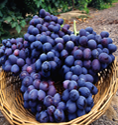Garlic effect on platelet aggregation (blood clotting)
Platelet aggregation superimposed on an atherosclerosis vessel is an antecedent event causing total blockage of blood flow leading to myocardial infarction and thromboembolic diseases. Platelets adhere to the exposed collagen, laminin and von Willebrand factor in the injured vessel wall. This process is called platelet activation. Activation can also be produced by ADP and thrombin. The activated platelets change shape, put out pseudopodia, discharge their granules, and stick to other platelets, initiating the process of platelet aggregation. Aggregation is also fostered by platelet activating factor (PAF), a cytokine secreted by neutrophil and monocytes as well as platelets [59]. Studies have shown that garlic has great potential in inhibiting platelet aggregation.
Animal studies
Pretreatment of rabbits with an aqueous extract of garlic (500 mg/kg) significantly inhibited thromboxane-B2 (TXB2) synthesis (a potent platelet aggregator) and protected against thrombocytopenia induced by collagen or arachidonate infusion. These observations indicate that garlic may be beneficial in the prevention of thrombosis [60]. Aqueous extract of garlic was found to inhibit platelet aggregation induced by ADP, epinephrine, collagen and arachidonate in a dose-dependent manner in vitro and inhibited biosynthesis of prostacyclin in rat aorta [61]. A dose-dependent inhibition of cyclooxygenase activity and collagen-induced platelet aggregation was observed in rabbit platelets treated with raw garlic in vitro. The concentration required for 50% inhibition of the platelet aggregation for garlic was calculated to be approximately 6.6 mg/ml plasma. But boiled garlic was found to be of little effect. This finding indicates that garlic may be beneficial in the prevention of thrombosis if ingested raw rather in a cooked form [62,63]. Garlic extract containing diallyl disulfide and diallyl trisulfide, prevented acute platelet thrombus formation in stenosed canine coronary arteries [64]. Fresh garlic extract is effective in reducing thromboxane formation by platelets both in vivo and in vitro animal models of thrombosis. It was observed that garlic inhibits thrombin-induced platelet synthesis of TXB2 in a dose-and time-dependent manner in rabbits. Maximum inhibition of TXB2 occurred between 0.5 h and 6 h at 25 and 100 mg/kg garlic. The rapid recovery of platelet cyclooxygenase activity after infusion of a single dose of garlic suggests that garlic should be taken more frequently in order to achieve beneficial effects in the prevention of thrombosis [65]. Garlic was also capable of delaying hyperthermia-induced platelet aggregation in mouse pial arterioles, in vivo, which was comparable to acetyl salicylic acid [66,67]. Ajoene, a constituent of essential oil of garlic, has been shown to inhibit in vitro platelet aggregation in different species of animals i.e., cow, dog, guinea-pig, horse, monkey, pig, rabbit and rat [68]. Under in vivo flow conditions and in the presence of physiological calcium levels, ajoene prevented thrombus formation induced by severe vascular damage, mainly in arterial sites with local low shear stress [69,70]. Makheja and Bailey (1990) identified three main antiplatelet constituents, namely adenosine, allicin and polysulfides in garlic [71]. Adenosine and allicin both inhibited platelet aggregation without affecting cyclooxygenase and lipoxygenase metabolites of arachidonic acid. The polysulfides inhibited platelet aggregation as well as thromboxane synthesis. The observed in vivo antiplatelet effects of ingesting garlic are attributable more to adenosine than to allicin and polysulfide constituents.
Human Study
In human studies a positive response to garlic has been observed. Like enhancement of fibrinolysis, garlic also has a beneficial effect on platelet adhesion or aggregation in human (Table- 3). Bordia (1978) first showed the dose-dependent inhibition of platelet aggregation by garlic [72]. Raw garlic, garlic oil and other extract of garlic have been shown to inhibit platelet aggregation in in vitro induced by ADP, collagen, arachidonate, epinephrine and calcium ionophore [57,61,73-75]. Chronic intake of garlic powder and garlic oil also inhibits platelet aggregation [28,50,55,76-79]. Single dose of garlic has also been shown to inhibit platelet aggregation [54,56,80].
Possible mechanism/s
The antiplatelet mechanism of garlic is much more established than its any other biological effects. Aqueous extract of garlic inhibited platelet aggregation induced by ADP, collagen, arachidonate, epinephrine and calcium ionophore A23187 in a dose-dependent manner [75]. It was found that garlic reduced the formation of thromboxane, inhibited the phospholipase activity and lipoxygenase products formed in platelets. These effects may explain, in part, inhibition of platelet aggregation. Further, since garlic was also effective in inhibiting aggregation induced by calcium ionophore A23187 it may be suggested that the antiaggregation effect may be related to intraplatelet mobilization of calcium. Inhibition of epinephrine-induced aggregation by garlic extract may suggest that it may be inhibiting uptake of calcium into platelets thereby lowering cytosolic calcium concentrations [75]. In regard to a specific mechanism of ajoene's antiplatelet action, several suggestions have been made. Ajoene strongly inhibits the metabolism of arachidonic acid by both cyclooxygenase and lipoxygenase pathways [81,82], thus inhibiting the synthesis of thromboxane A2 and 12-HETE. Antiaggregatory effect of ajoene may also be causally related to its direct interaction with the putative fibrinogen receptor (GPIIb/IIa) [83]. The studies of Jamaluddin et al (1988) demonstrated that ajoene interacts with a purified hemoprotein implicated in platelet activation [84]. Ajoene modifies the binding of the hemoprotein with ligands deemed to be physiologically relevant as effectors. Allicin inhibits human platelet aggregation in vitro without affecting cyclooxygenase or thromboxane synthase activity or cyclic adenosine monophosphate (AMP) levels. Allicin also inhibits platelet aggregation but does not alter the activity of vascular prostacyclin synthase. However, it inhibits ionophore A23187-stimulated human neutrophil lysosomal enzyme release. Thus garlic appears to be in possession of components which might exert their effects at various stages involved in the process of platelet aggregation.



